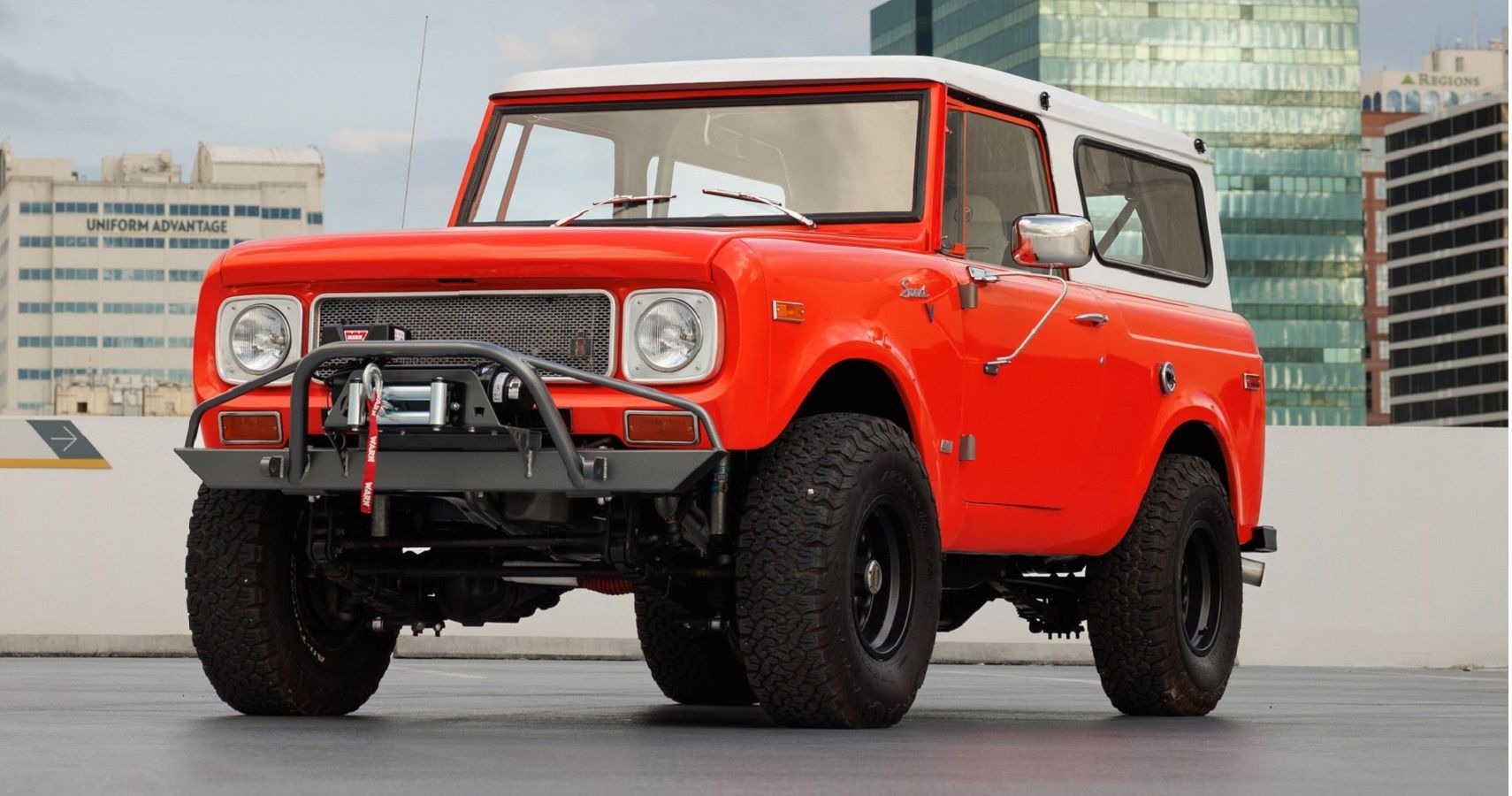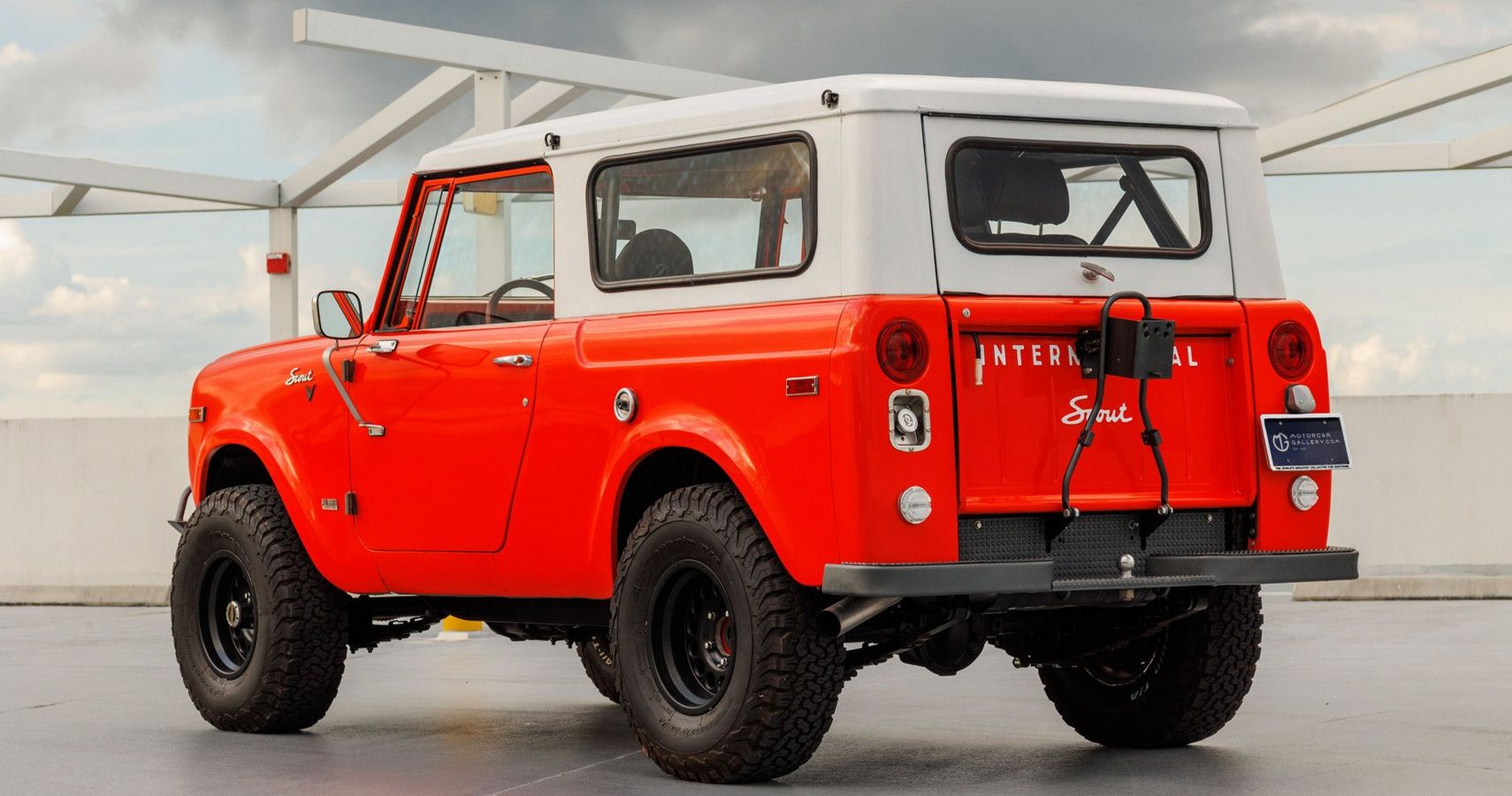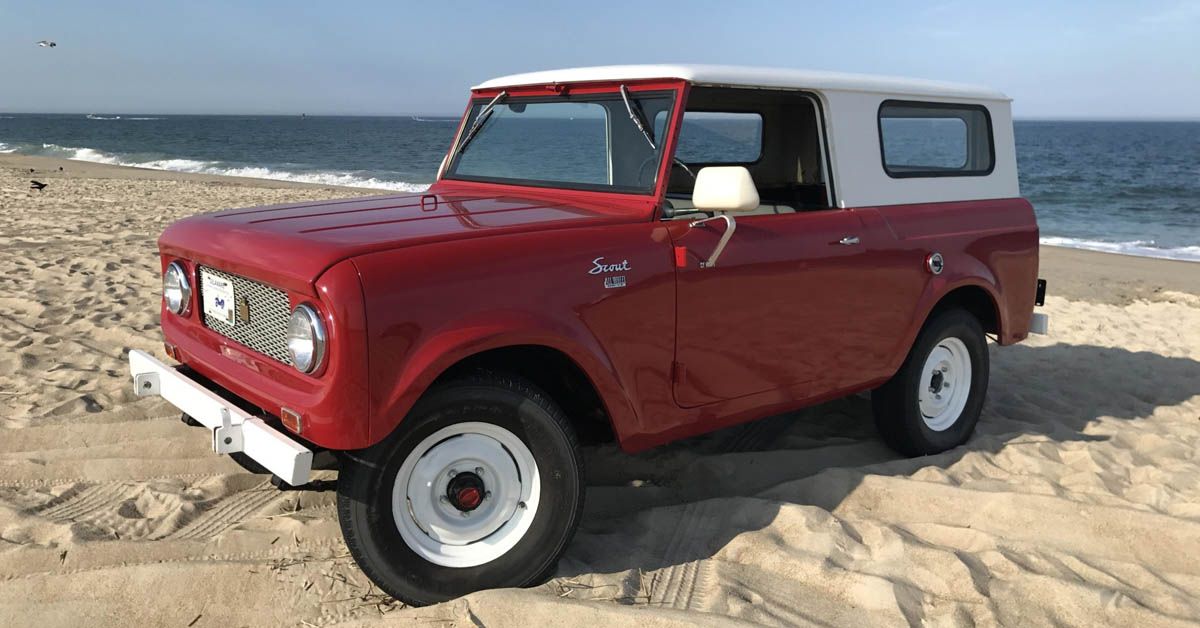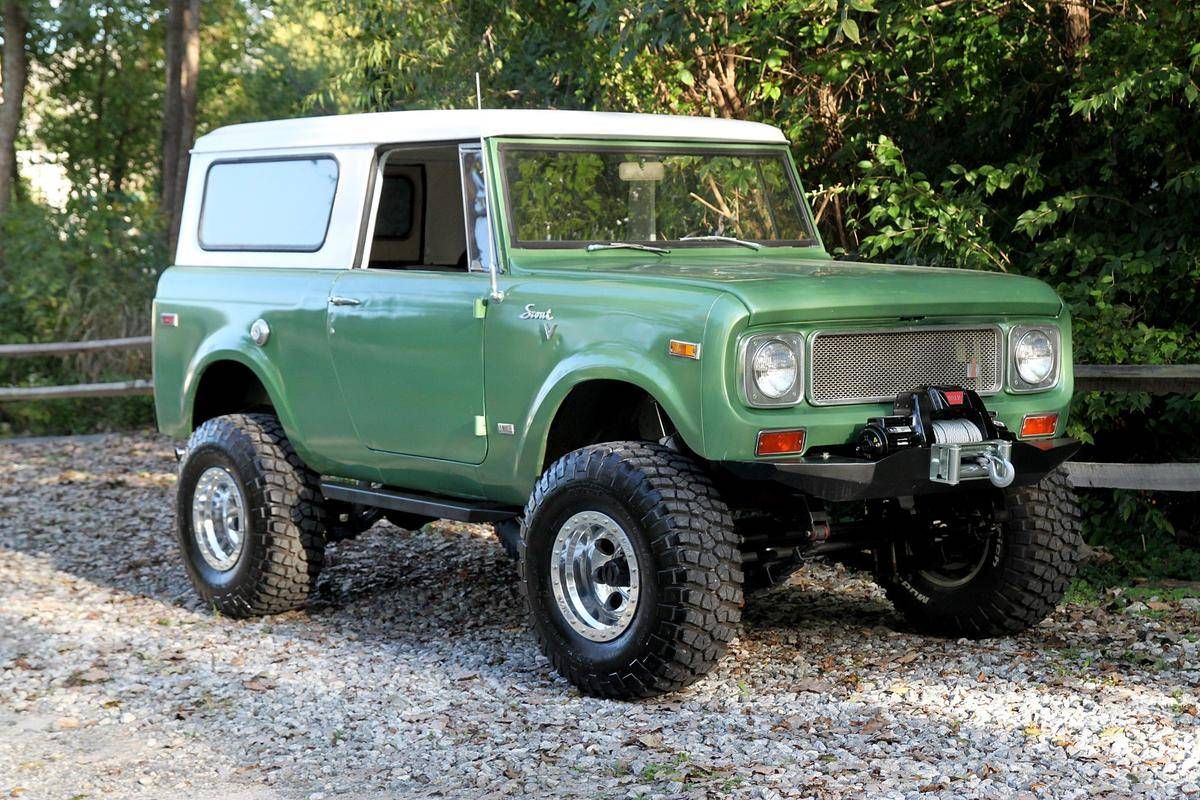The International Harvester Scout is iconic, rugged, and extremely quirky. Originally built by agricultural and automotive company International Harvester, the little Scout impressed the world by being the grandparent to our present-day SUVs.
International Harvester created the Scout to compete with the all-terrain conquering Jeep. But the Scout wasted no time in quickly proving that it was in a league of its own. In fact, International Harvester’s marketing said it best at the time: “International Scout: Anything less is just a car”.
International Harvester came from a background of building tractors and durable machines, which shows in the Scout’s capabilities. International Scouts are sought after by gearheads who yearn to have a vehicle of such significance. Being the precursor to beloved American SUVs will do that. There are a lot of reasons why fans of minimalist, dependable trucks tend to gravitate toward the Scout, partially because of the innovation that this truck embodies. Talking specifics, the International Harvester Scout 800B is a model that you may have to shell out just a bit extra for.
The price of the Scout 800B is skyrocketing. If you’re longing to get your hands on one of these resilient off-roaders, price can be a factor. Here’s why owning the International Scout 800B comes at a premium.
The Story Of The International Harvester
In 1847, Virginia inventor Cyrus Hall McCormick moved to Chicago with his brother Leander J. McCormick to be near the Midwestern grain fields, and the two brothers founded McCormick Harvesting Machine Company.
The International Harvester Company was originally created through a merger with four other agricultural equipment companies – McCormick Harvesting Machine Company, Deering Harvester Company, Milwaukee Harvesting Machine Company, and Plano Manufacturing Company. These five establishments came together to form a larger, more powerful force that would be better equipped to meet the needs of farmers across the country. The new company would offer a full line of products, making it a one-stop shop for everyone's farming requirements.
Into the 1960s and 1970s, International Harvester was going strong, but unsightly cracks began to form with their narrow profit margins. By 1979, International Harvester appointed a new CEO to widen the margins, but his aggressive strategies lead to strikes and angry unions. By 1981, the strikes cost International Harvester enough lost profit to lead to the company's slow dismantlement.
The International Harvester Scout 80 Is The Most Desirable
The most valued and sought after Scout in our eyes has got to be the Scout 80. It is the ultimate ground zero and the beginning of the Scout line, which means this scrappy SUV is often seen as an iconic classic.
Offered from 1960 to 1965, the Scout 80 was not a fast car by any measure, but what it lacked in speed, it made up for with its ruggedness and reliability. It was specifically designed to go head-to-head with Jeep, after all. Although the mighty Jeep lives on, the Scout 80 will forever live as a timeless classic.
If you can't get your hands on a Scout 800B, you'll be happy to know that there is an abundance of the Scout 80. It enjoyed a longer production run than the Scout 800B, and a Scout 80 in decent condition could run from $35,000 to $45,000.
What’s To Blame For High Prices Of The International Scout 800B
The Scout 800B was the last entry to the 800 line, and was only produced from August 1970 to March 1971. Such a small production window is bound to lead to gearhead FOMO.
Externally, the 800B was the same as the 800A – but with upgraded cosmetic features. What the 800B offered were special packages, like the Comanche, which featured top of the line add-ons, from chrome wheels and nicer interiors to roof racks and special paint. The Scout 800B was available with a variety of options that could make it very different from another Scout 800B. Line tickets got created during production that had a list of that particular Scout’s specs to make servicing easier.
The uniqueness of the Scout 800B means that no two are perfectly alike. The 800B's eight-months of production also makes for fewer available models, with an ultimately unclear amount of how many were actually made. Even finding one for sale can be a bit of a struggle. The rarity of the 800B means that the prices will only go up as time goes on, and the Scout 800B will retain its glory for being a great off-roader.
Why Did International Harvester Stop Making The Scout?
Like all good things, they must come to an end. Production for the Scout line stopped in 1980, as International Harvester looked toward the future and focused on commercial vehicles. This attempt to correct the slim profit margins was unsuccessful due to mismanagement within the company, and by 1983 International Harvester shut its doors for good.
But similar to an action movie, after the credits have rolled, we see some glimpse of a possible resurrection. Volkswagen has reportedly purchased the rights to the Scout name and intends to resurrect this classic and bring it, hopefully, back to life – leveled up. If successful, we may have a Jeep and Bronco killer with the return of the Scout.
Sources: Wane, The Truth About Cars, Whiteknuckler Brand





